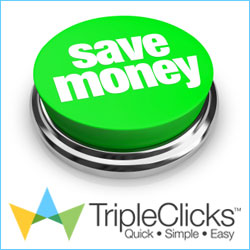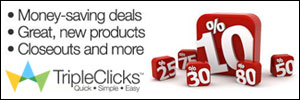What Is Sales? A Quick Guide
By definition, the term "sales" refers to all activities involved in selling a product or service to a consumer or business. But in practice, it means so much more.
A lot of effort goes into successfully closing a deal – from sourcing prospects to building relationships and providing customers with solutions. We’ll dig into types of sales, common sales terms, and sales methodologies to help you solve for the customer and increase revenue.
Free Download: Sales Plan Template
What are sales?
Sale is a term used to describe the activities that lead to telling goods or services. Businesses have sales organizations that are broken up into different teams. And these sales teams are often determined based on the region they're selling to, the product or service they're selling, and the target customer.
Companies staff entire departments with employees dedicated to selling their products and services. Salespeople reach out to contacts that might be interested in purchasing the product or service that their company is selling — prospects that demonstrate interest through actions like visiting the company website or interacting with the company on social media.
The goal is to reach out to leads who have shown interest in or fit the description of the company’s target customer, in hopes of providing them with a solution that results in a purchase of your product or service.
While many sales teams are held to monthly quotas and benchmarks for converting leads and closing deals, the real goal of sales is solving for the customer.
Marketing and Sales
Where can salespeople source leads and prospects? The campaigns and efforts of the marketing organization are some of the best ways to generate qualified leads. And the State of Inbound Report found that salespeople source 28% of their leads from marketing. While marketing and sales use different processes, both business functions impact lead generation and revenue.
So, how do sales teams sell? Let’s review the most common types of sales.
Types of Sales
- Inside Sales
- Outside Sales
- B2B Sales
- B2C Sales
- Business Development Sales
- Agency Sales
- Consultative Sales
- eCommerce Sales
- Direct Sales
- Account Based Sales
1. Inside Sales
When sales teams engage with their prospects and customers remotely, often from an office alongside their team members, they follow an inside sales approach. This means they are selling from within their company. Organizations that use an inside sales approach often tend to have leaner, more automated processes and structured hours.
From phone service to the internet to TV, AT&T provides products and services for just about any consumer and business. The company's inside sales reps contact leads and prospects to complete the traditional sales process — uncovering the customers' needs, matching them with the right solution, and closing the deal. They might use sales software to keep track of customer interactions and sales won.
2. Outside Sales
On teams where salespeople broker face-to-face deals with the prospect, they are following an outside sales approach. This implies that they are selling from outside their company — traditionally through door-to-door or field sales. These teams tend to not have strictly regimented processes, allowing freedom and flexibility for reps to develop and implement their own sales strategies.
As a leader in medical-grade equipment, Medtronic utilizes the skill set of experienced sales reps to match its products with medical professionals. Medical device sales reps spend the majority of their time traveling — but once they reach their destinations, they meet with medical professionals and administrators who make decisions about what to purchase.
In addition to traveling to prospective customers, they might attend conferences and events where these decision-makers might be to network and build relationships before it’s time to make a sale.
GetAccept is a sales enablement platform that helps sales reps build relationships with buyers. As a business that helps other businesses sell better, GetAccept classifies as a B2-B company. Its sales reps work with other sales team managers to promote the benefits of the GetAccept products and create long-term clients that generate revenue for the business over time.
4. B2C Sales
Unlike B2-B sales, B2C (or business-to-consumer) sales revolve around transactions between a company and its individual consumers. These deals tend to be of lower price value and complexity than B2B sales and can involve multiple deals with a variety of customers.
Moving companies rely on B2C sales to connect directly with the consumer who uses their services. the pack uses digital ads to source leads which their B2C sales team turns into customers.
Its sales process is simple but effective — the company gets customers interested in its services by offering them a free quote on their move. Then, the B2C sales reps get to work enticing the prospective customer to choose their moving service over the competition because of lower prices and faster moves.
5. Business Development Sales
Though business development doesn’t account for an entire sales transaction, it’s an important aspect of the sales function for many companies. This role is typically held by Slack
BDRs at Slack is responsible for the pipeline within enterprise accounts. They drive outreach to several stakeholders at the companies where they work. People in these roles are expected to be product experts and build demand for the Slack product.
6. Agency Sales
This type of sales involves generating and converting new leads to sign onto service packages from an agency. According to HubSpot’s 2019 State of Agency Selling, the average agency sales cycle is between 31 and 90 days, with most agencies bringing on one to three new clients each month.
In the agency sales space, clients are typically signed either by project or on a retainer. Agencies that sign clients by project, primarily focus on bringing in new business and selling service packages to new clients as their current projects wrap up.
With a retainer model, agencies can engage with clients on an ongoing basis which allows for predictable recurring income with less dependence on bringing in a steady stream of new customers.
The UMG team of brothers started their creative agency using agency sales — selling one-off projects like business plans and ongoing website services to businesses in South Carolina. Now, the business has grown to multi-million dollar heights with several loyal clients on retainer.
7. Consultative Sales
Consultative selling is a style that focuses on building trust with the customer to understand their needs before recommending a specific product or service.
With consultative selling, sales reps focus on building a relationship with the buyer and leading the sale with how the offering will benefit the individual customer, instead of solely focusing on the features of the product to make the sale.
When shopping around for a mortgage lender, there are a lot of variables that can influence a home buyer’s decision to choose one over the other. The truth is, those variables are cold, hard numbers.
Consultative sales work for mortgage lenders because they can bring a human aspect to the home loan process. Legacy Home Loans does exactly this, even measuring success "one smile at a time."
8. eCommerce Sales
Does your company sell products exclusively online? Is your customer able to research your product, determine whether they want to buy it, and make their purchase online all without needing to engage with someone from your company? If so, you’re following an eCommerce or online sales model.
Though this type of selling is more hands-off than other types, it can work well for lean companies that can’t staff a full sales department, or for companies who offer products that can be effectively sold through targeted digital marketing.




















0 Comments
Thank you for being here.. Tell us what you think.